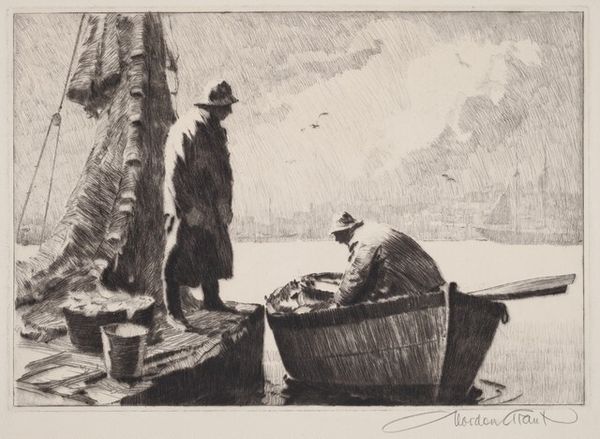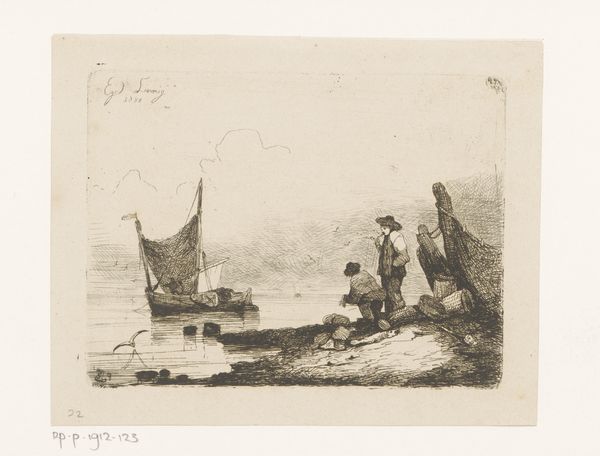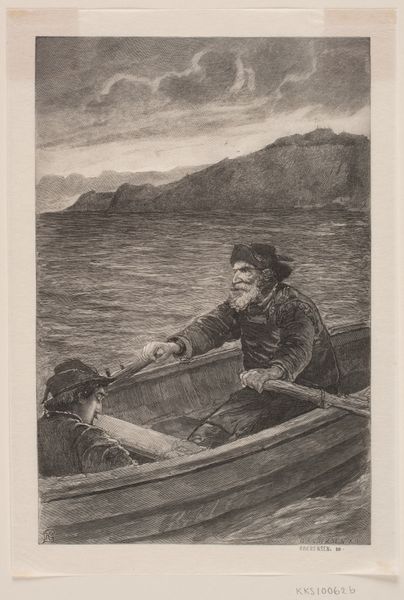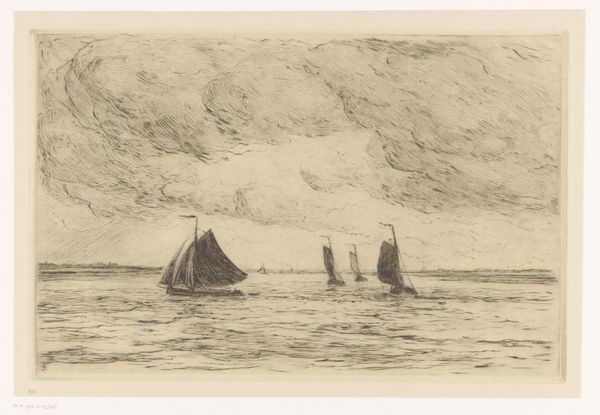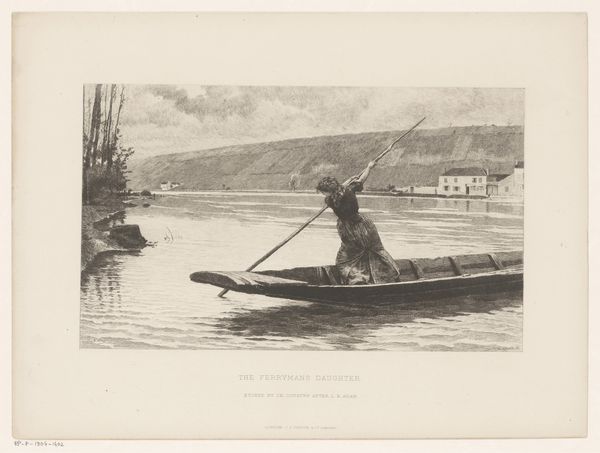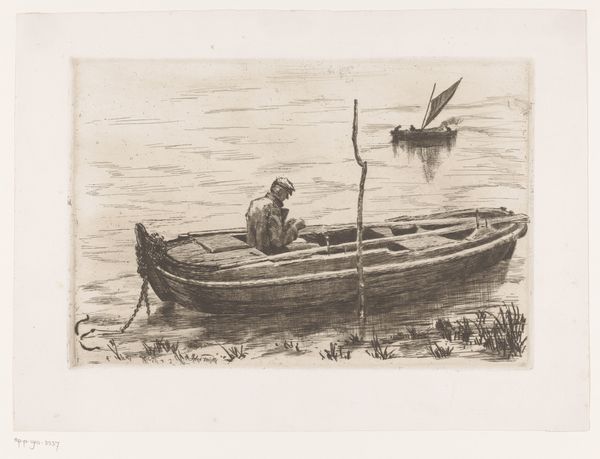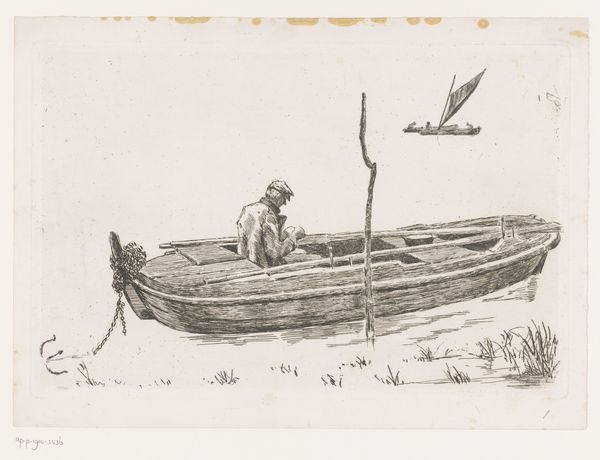
Copyright: CC0 1.0
Curator: Let's turn our attention to "Man of Gloucester," an etching by Gordon Grant. There's no firm date for the piece, but Grant lived from 1875 to 1962. Editor: Immediately, I'm struck by the somber mood. The stark lines and limited tonal range create a palpable sense of isolation and toil. Curator: That aligns with Grant's social realism. He often depicted the lives of working-class Americans, especially maritime laborers. Gloucester, Massachusetts, was and still is, a significant fishing port. Editor: Notice how the diagonal lines converge toward the horizon, creating depth, but also trapping the figures in this watery world. Curator: Indeed. The composition emphasizes the economic realities of these men. They are intimately connected to the sea and the work it demands of them. Editor: The etching technique itself—the fineness of the lines—mirrors the laboriousness of their task. Curator: It’s a somber portrayal, but one that speaks to the dignity of labor and the importance of these maritime communities. Editor: Precisely. The artist's use of light and shadow lends a dramatic touch, highlighting the harshness of their existence. Curator: Well, this etching offers an insightful glimpse into a specific time and place, reflecting on the lives of ordinary people. Editor: And considering the work's formal aspects deepens our appreciation of both the skill of the artist and the lives portrayed.
Comments
No comments
Be the first to comment and join the conversation on the ultimate creative platform.
